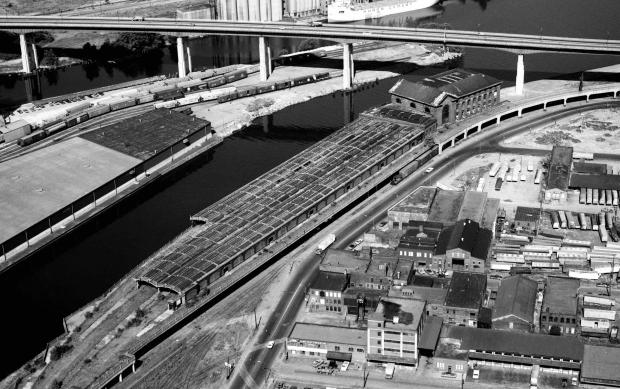DL&W Terminal Proposal a Dead End
Like everyone else invested in urbanism, I want to live in a city a with modernized and efficient public transportation system. And that’s exactly why dumping tens of millions of dollars of public money to build a train station a few hundred feet south of an existing station borders on the absurd.
Any plan for the DL&W terminal stirs our collective blood for good reason. Ever since the arena (on its third name, waiting on its fourth) was built in the late 90s, the DL&W terminal has served a key role in Buffalo’s redevelopment porn; multiple developers, elected officials, architects, and bloggers have ogled the expansive riverfront property and fantasized about its prospects, now a stone’s throw from the area’s hottest real estate at Canalside. And for good reason: It’s a cavernous facility wedded to Buffalo’s industrial past with an entertainment district on one side, and a river with grain elevators on the other.
The plan being proposed by the NFTA, which uses the facility for storage and maintenance for its fleet of trains, calls for with a $32 million or $42 million investment in the property to create a new train station about 1500 feet from the existing Erie Canal Harbor station and about 1000 feet from the special events station used for arena events.
The NFTA’s director of ground transportation, Thomas George, told the Buffalo News that the “cost-benefit ratio” for the project “will be very attractive.” But how exactly? It would seem that any cost-benefit ratio that the NFTA is cooking up includes a significant amount of private investment in the facility that can piggyback on the public infrastructure investment with any number of the past plans taking shape: an indoor market lined with vendors, a Buffalo Hofbräuhaus location, a museum of some kind.
But no such plan exists at this point, the many proposals made for the building have all stalled at some point for some reason or another. There are tens of thousands of square feet at play, this does not warrant a “build it and they will come” hope for future development.
A downtown developer known to take risks on historically significant properties, Rocco Termini, the one developer the News spoke with, threw some tepid water on the plan:
Termini continues to voice caveats about the need for more “critical mass” in the waterfront area. But he also says he is now intrigued, and that a project five years down the road might arrive at an opportune time.
“It’s a great idea, even if I still don’t know if they’re ready for retail yet,” he said. “I would first develop the Inner Harbor before the DL&W.”
I have no idea what “a project five years down the road might arrive at an opportune time” means exactly, but for now that’s besides the point. What matters here is that we all really have to wonder if that pool of public money would be best spent just for commuters to be able to walk off a train and into the arena or its adjacent parking garage without ever having to go out of doors. That seems to be the only qualitative difference.
What the plan underscores is a lack of vision for the NFTA’s existing strengths in its current ground transportation network. It’s an efficient and well-used system operated by professionals that stand in constant peril of being underfunded and then undermined by government officials and agencies.
Yes, the buses are well-used, but could certainly sustain an increased ridership that would in turn, make great strides to sustain the authority. Instead of building a fancy, shiny thing in Buffalo’s showcase district, it seeks to invest in its current system by building more bus shelters, improved signage and schedule information posted to its shelters, and finally an app for smartphones. The Transit app available on most platforms is great, but why couldn’t the NFTA develop their own app with increased functionality and give users ability to geo-locate where their next bus is, and one that connects new residents and visitors to connect with other local amenities?
If the NFTA is underfunded, why does the Erie County Industrial Agency continually award tax abatements to new developments downtown that build adjoining parking ramps? Uniland’s new Delaware North building and its 5-story parking ramp at Delaware and Chippewa received over $9 million in tax breaks, out of the same pool of money used to fund the NFTA. Does anyone doubt whether Ellicott Development’s new high rise with parking ramp at Pearl and Tupper will seek tax credits roughly in the same ballpark as what Uniland received?
Without building out an entire system that invests in and encourages greater public transportation usage—and not just rail usage—we remain ideologically wedded to our cars. It remains to be seen how the DL&W station could ever increase public transportation use. The current Metrorail stations can accommodate trains only four cars long. After every hockey game, each of those cars are jam-packed with riders. Ridership to and from arena events is not a current problem, why spend tens of millions on an albatross to fix it?

